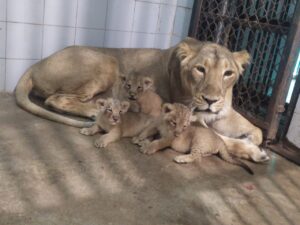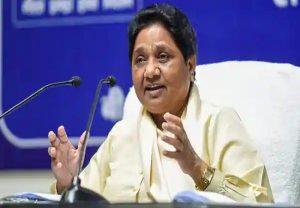Ayodhya, 30 Jan: According to Korean tradition, a young princess from Ayodhya crossed the ocean in a boat some 2,000 years ago, travelled 4,500 km to Korea, and married King Kim Suro, who created the Gaya Kingdom in the north Asian kingdom. Suriratna went on to become Queen Heo Hwang-ok.
The tale is hardly known in India, nor is the fact that about 60 lakh people in South Korea identify as Suriratna descendants and regard Ayodhya as their mother home. As a result, many of them anxiously watched the Ram Temple dedication online from their own homes on January 22nd. And they can’t wait to go to Ayodhya to witness the huge new Ram temple structure up close.
Every year, several members of the Karak clan travel to Ayodhya to pay respect to Queen Heo Hwang-ok’s memorial at the Queen Heo Memorial Park, which was established on the banks of the Sarayu River in Ayodhya in 2001 through collaboration between the Uttar Pradesh government and the city of Gimhae in South Korea.
Kim Chil-su, secretary general of the Central Karak Clan Society, stated that Ayodhya holds a particular place in our hearts since it is our grandmother’s house. He was among those who attended the January 22 ‘Pran Pratishtha’ ceremony for Ram Lalla’s new idol at the temple, which is a few miles from the Queen Heo Memorial Park.
The park covers 2,000 square metres and includes a meditation hall, pavilions dedicated to the queen and king, walks, a fountain, murals, and audiovisual equipment. The pavilions are constructed in a traditional Korean style, with tiled sloping roofs.
“We visit Ayodhya every year to pay our respects at the memorial, and this time we aim to visit the new Ram temple as well. We watched the ceremony online, and what an experience it was. I haven’t been to the old makeshift shrine, but I’ve read about the dispute,” Yu-Jin Lee, who hopes to visit the city with 22 people in February, said over the phone from South Korea.
According to the “Samguk Yusa” ancient Korean history literature, Queen Heo Hwang-ok is honoured as the progenitor mother of the Gimhae Heo clan. According to the source, the queen arrived in Korea in AD 48 from “Ayuta”. She is still honoured as the Gimhae Heo families’ progenitor mother in the Karak clan.
In a post on X, the South Korean embassy also congratulated India on its consecration event on January 22. “The place holds a great symbolic importance for Korea-India relations based on the matrimonial link between Queen Sriratna (Heo Hwang-ok) from Ayodhya and King Kim Suro from Gaya (Korea) in 48 AD,” according to the statement.
Prime Minister Narendra Modi and former South Korean President Moon Jae-in signed a Memorandum of Understanding in 2015 to expand the memorial. In 2018, South Korean First Lady Kim Jung-sook visited the beautification work’s opening. India released commemorative Rs 25 and Rs 5 postal stamps for the Queen in 2019.
N Parthasarathi, an Indian diplomat who served as ambassador to South Korea, also published a novel on Suriratna’s life called “The Legend of Ayodhya Princess in Korea.” It was released in Seoul under the title “Bi Dan Hwang Hoo,” or Silk Princess in Korean. Later on, the National Book Trust of India released a children’s book based on the novel.





